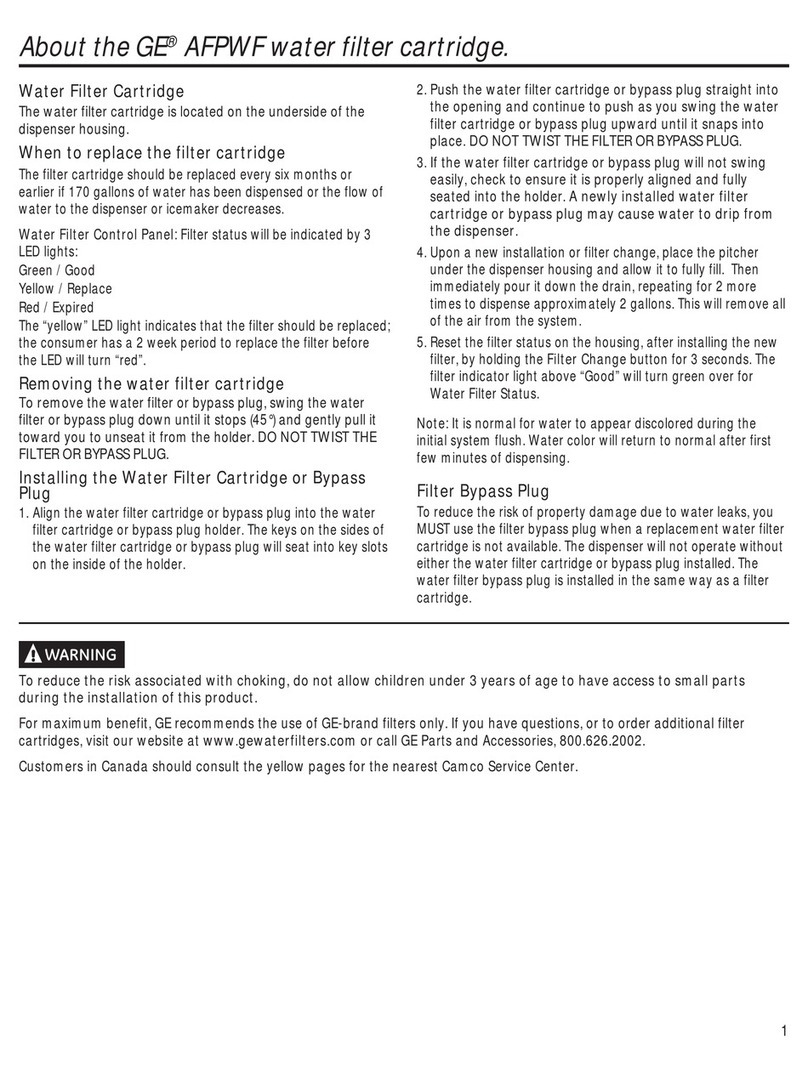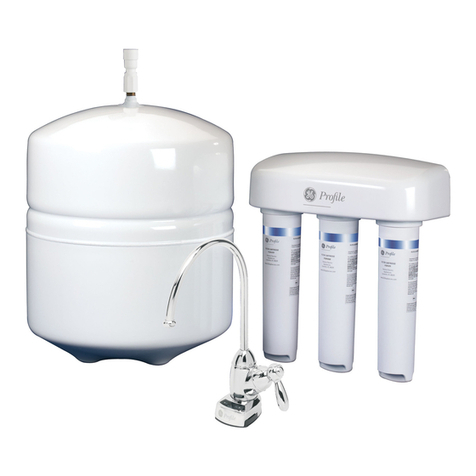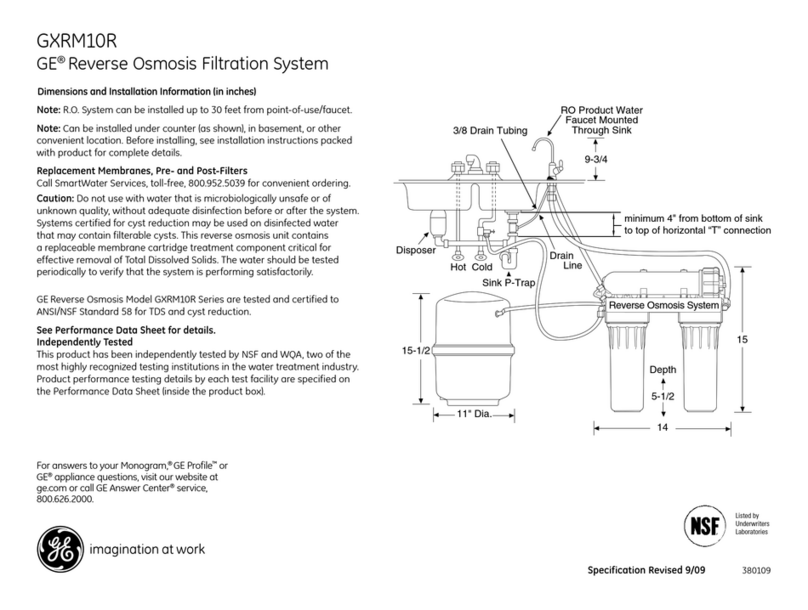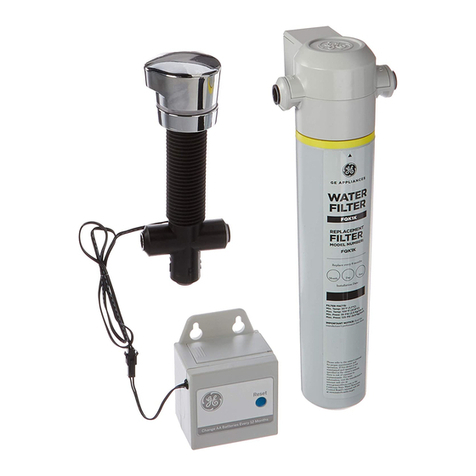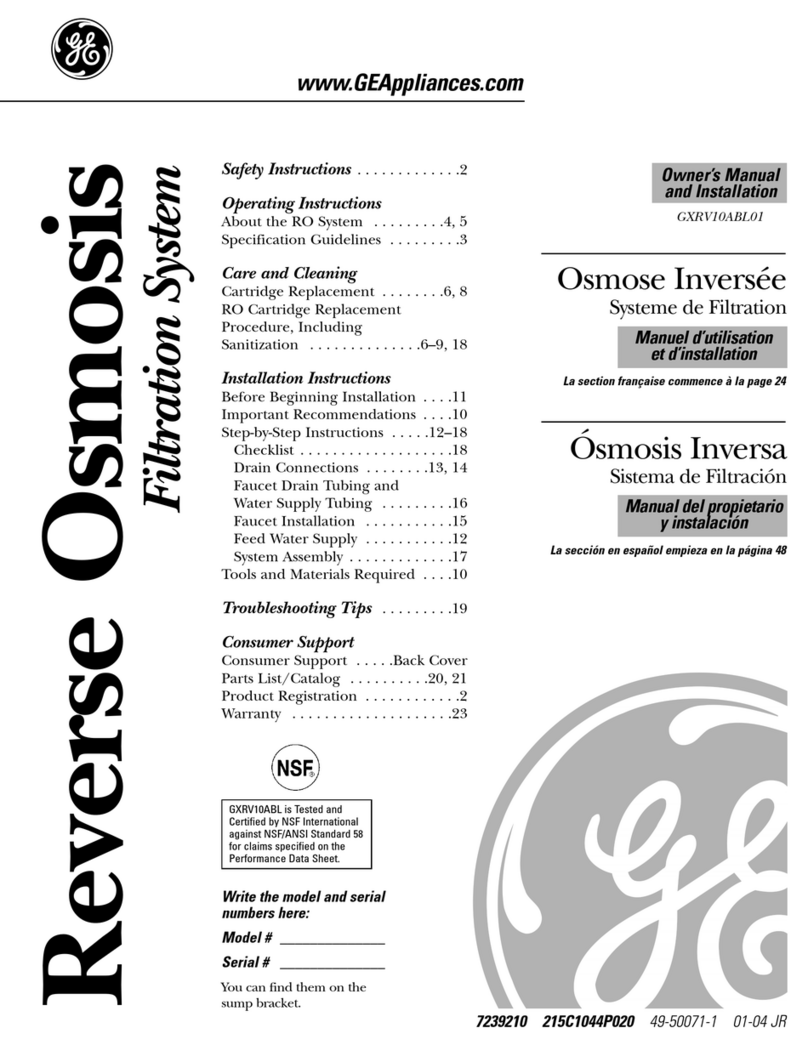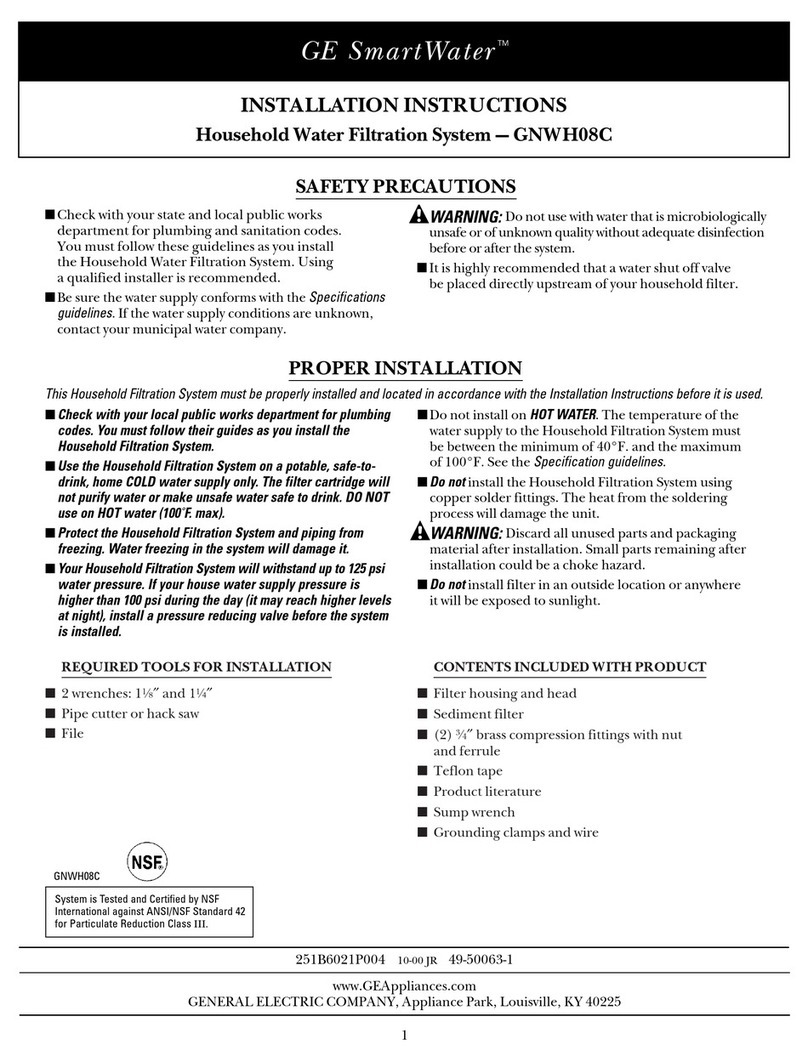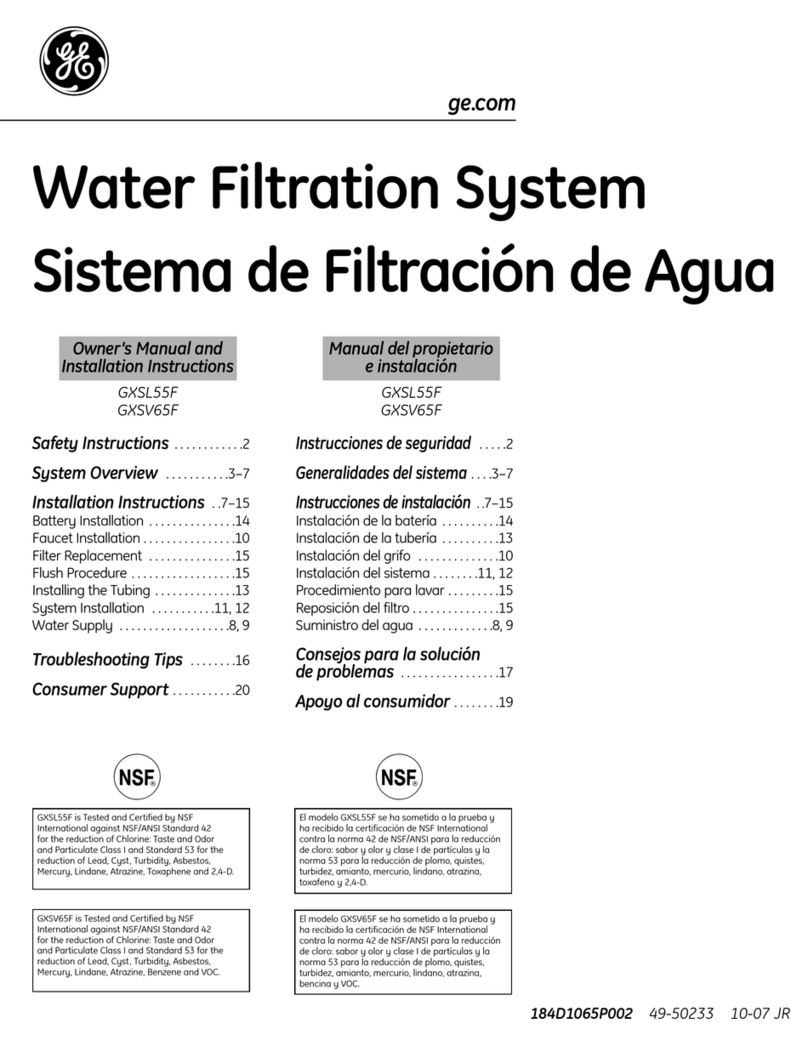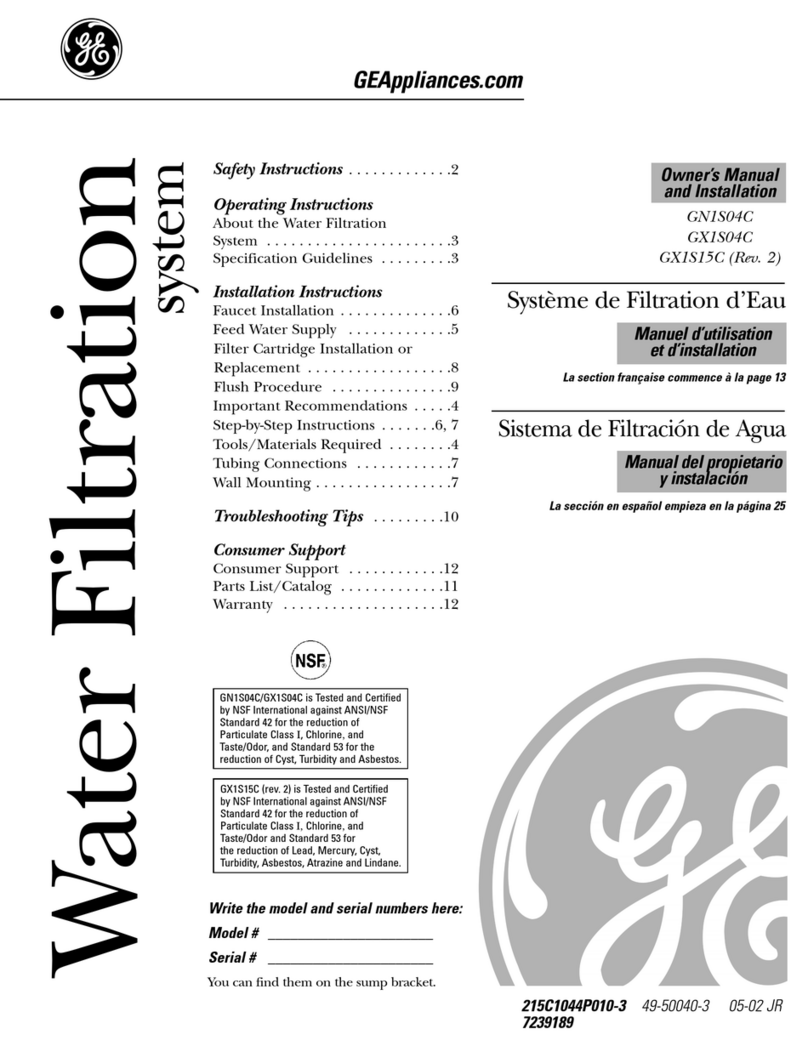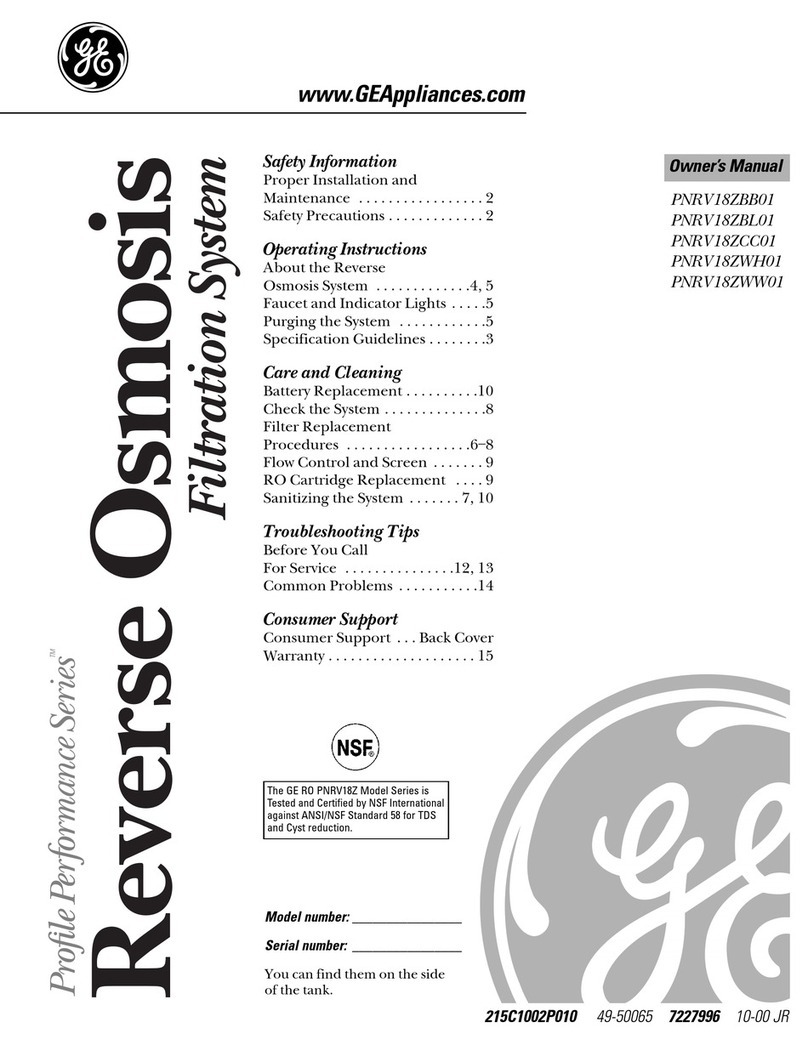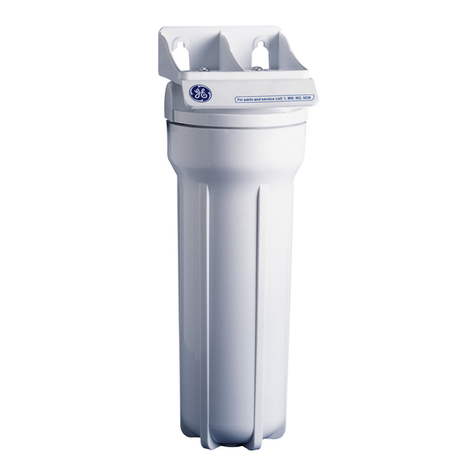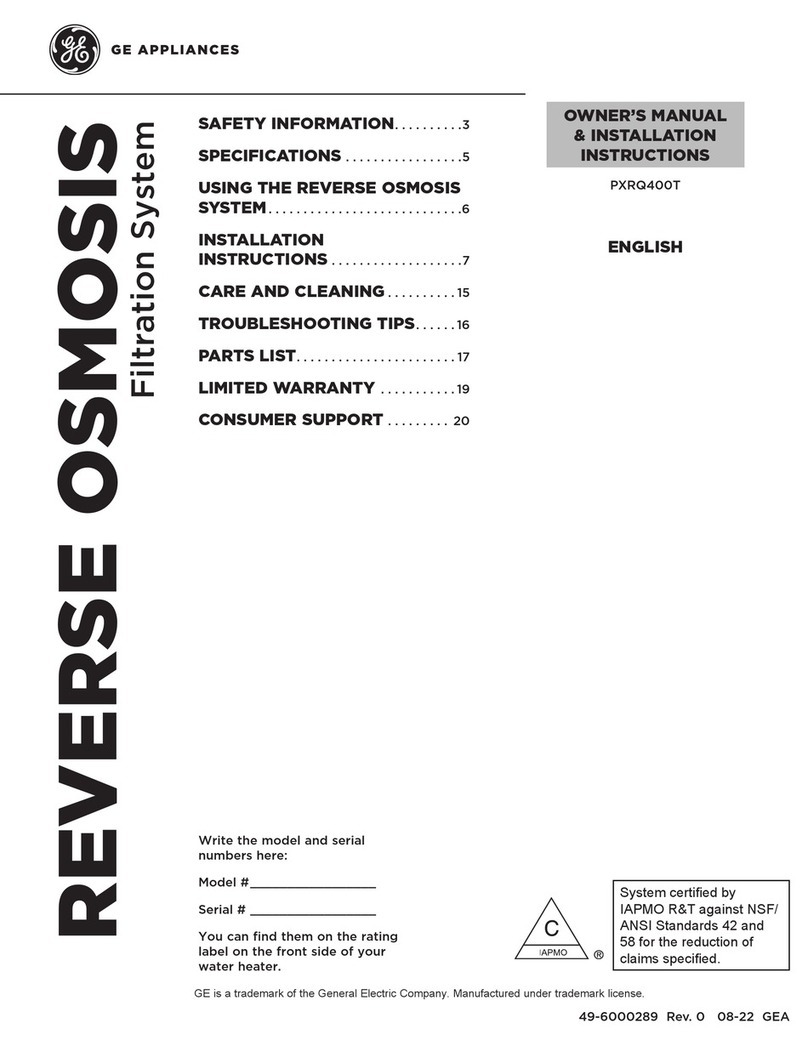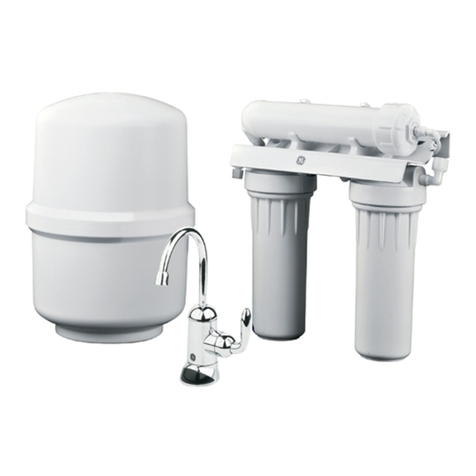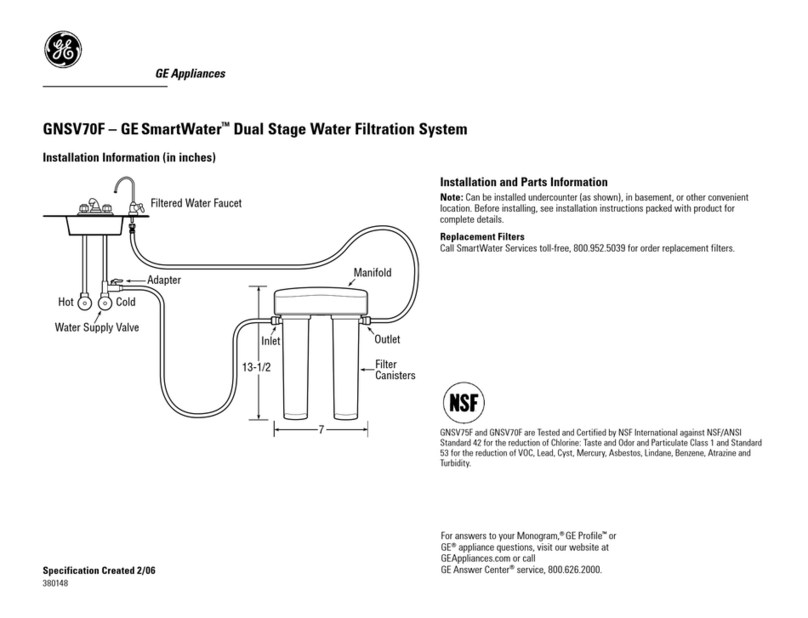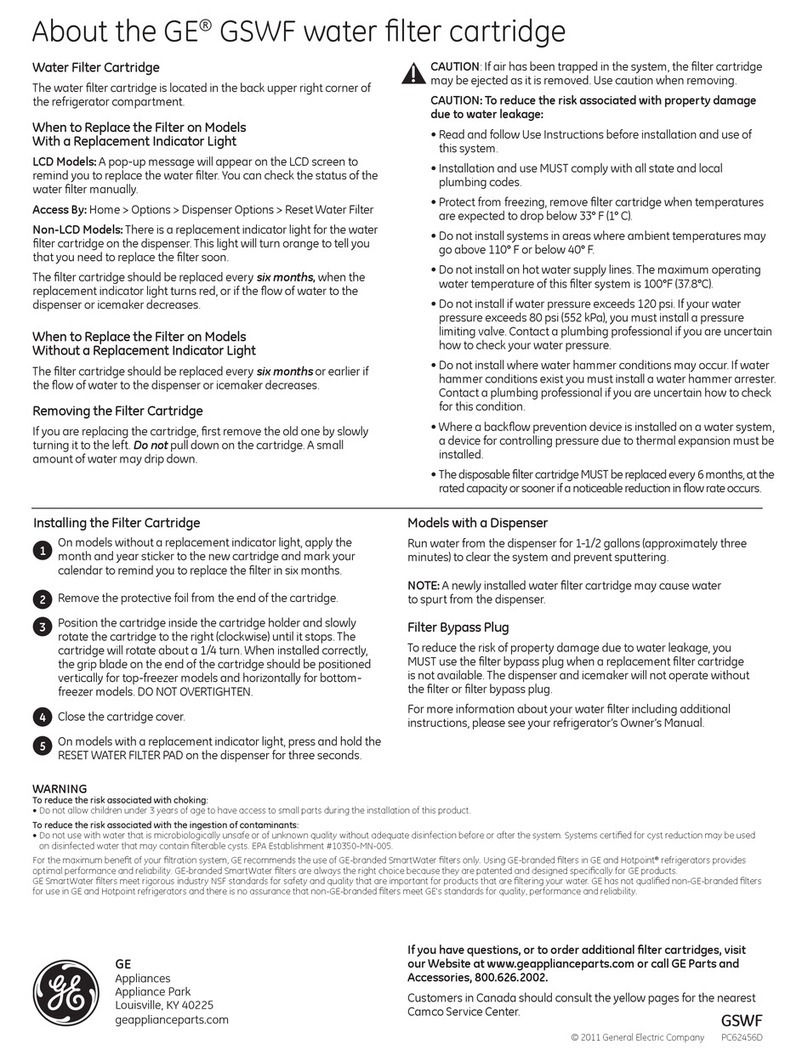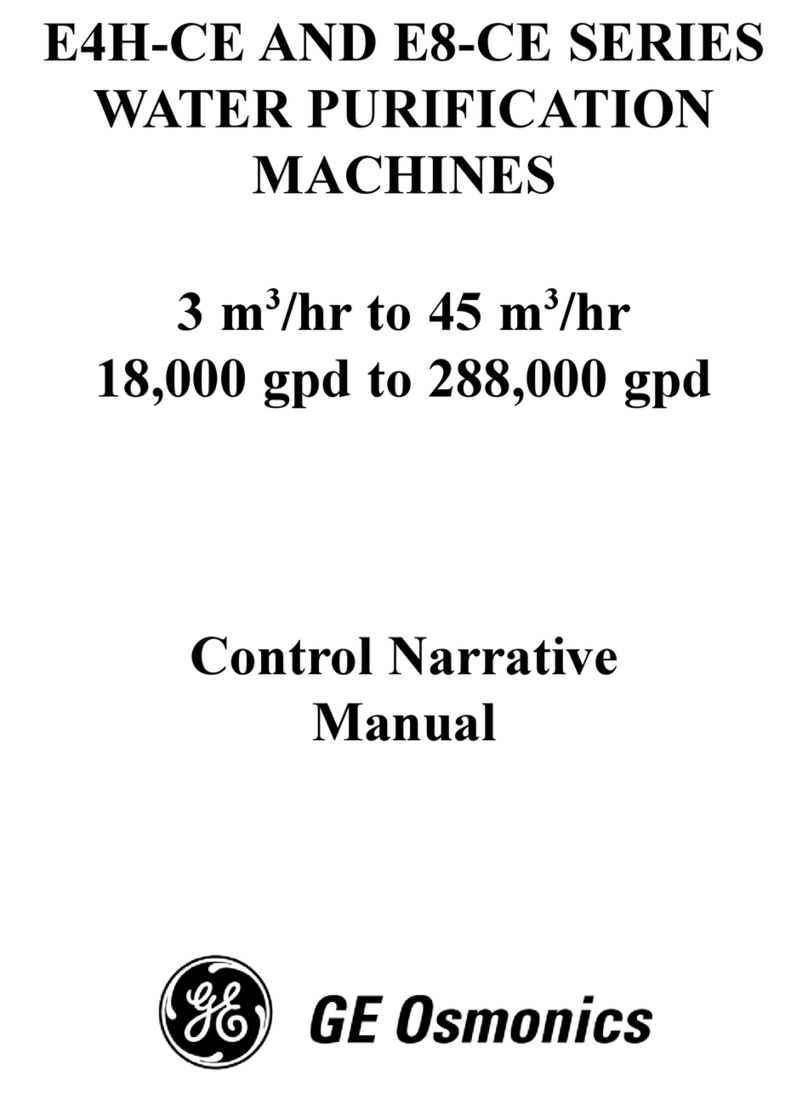
2
TABLE OF CONTENTS
1. DESCRIPTION.......................................................................................................................................... 4
1.1.Definitions................................................................................................................................................. 4
1.1.1.Permeate Rate (Product Water Rate) [Qp]........................................................................ 4
1.1.2.Concentrate Rate (Reject Rate) [Qc] .................................................................................... 4
1.1.3.Feed Rate [Qf]................................................................................................................................ 4
1.1.4.Reverse Osmosis (RO)................................................................................................................ 4
1.1.5.Membrane Elements.................................................................................................................. 5
1.1.6.CIP ...................................................................................................................................................... 6
1.1.7.Average Pressure [PAVG]............................................................................................................ 6
1.1.8.Concentration............................................................................................................................... 6
1.1.9.Salt (Ionic) Passage..................................................................................................................... 6
1.1.10.Recovery.......................................................................................................................................... 6
1.1.11.Salt (Ionic) Rejection ................................................................................................................... 6
1.2.Machine Nomenclature...................................................................................................................... 7
1.3.Specifications for E-Series Machines ........................................................................................... 8
2. INSTALLATION........................................................................................................................................ 8
2.1.Mounting the Unit ................................................................................................................................. 8
2.2.Plumbing ................................................................................................................................................... 8
2.3.Installing Clean-In-Place Valves ..................................................................................................... 9
2.4.Concentrate Outlet Connections.................................................................................................... 9
2.5.Feed Water Requirements ..............................................................................................................10
2.6.Transporting Pure Water (Permeate) to Point-of-Use ........................................................10
2.7.Pressure Correction Factors...........................................................................................................10
2.8.Electrical..................................................................................................................................................11
2.8.1.Single-Phase Electrical............................................................................................................11
2.8.2.Three-Phase Electrical ............................................................................................................11
2.9.Machine Control...................................................................................................................................12
2.9.1.Economy Model .........................................................................................................................12
2.9.2.Deluxe Model...............................................................................................................................12
3. PREPARATION AND STARTUP ........................................................................................................12
3.1.Pretreatment for Water Purification...........................................................................................12
3.2.Machine Start-Up Preparation......................................................................................................13
3.3.Machine Start-Up................................................................................................................................13
3.4.Temperature Correction Factor....................................................................................................14
3.5.Autoflush Timer....................................................................................................................................15
3.5.1.Programming the Autoflush Timer....................................................................................15
3.6.Calibrating the Conductivity Probe .............................................................................................15
4. OPERATION AND MAINTENANCE.................................................................................................16
4.1.1.Daily Flushing for the Economy Model............................................................................16
4.1.2.Daily Flushing for the Deluxe Model .................................................................................17
4.2.Pre-filter Cartridge..............................................................................................................................17

